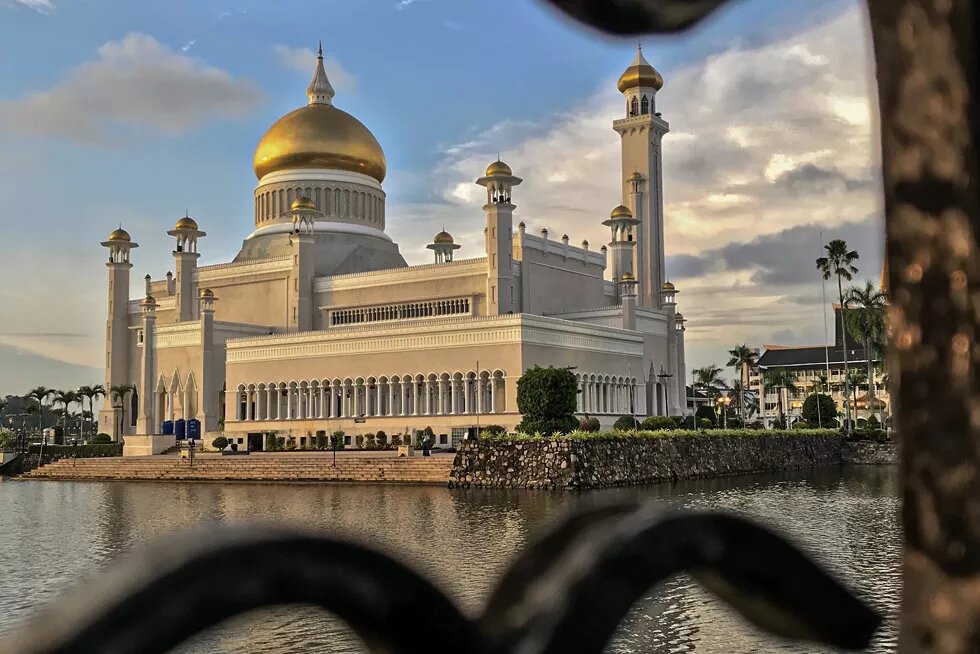
In Brunei Darussalam, the Chinese form the largest ethnic minority, residing in a nation with a small population but vast land. They share similarities with neighboring countries, yet maintain their cultural identity. The Belt and Road Initiative has brought an influx of overseas Chinese, contributing to various sectors. Cultural assimilation, language preservation, and a growing literary scene showcase their dynamic presence. Chinese private schools teach Mandarin, and the celebration of Chinese traditions persists. The Chinese community in Brunei embraces multiculturalism, thus, shaping a unique cultural identity in a globalized world.

In the tiny sultanate of Brunei Darussalam, the Chinese comprise the largest ethnic minority group. With a population of under half a million residing on a total land mass of about seven times bigger than the island-state of Singapore, Brunei Darussalam shares similarities with its neighbouring countries in terms of a dominant Malay identity with Malaysia, official Islamic religion with Indonesia, and a local currency that is pegged to the Singapore dollar. In the Southeast Asian region, the Chinese have carved a home for themselves arriving into this part of the world as sojourners, but also as settlers during the migration fever over the last millennium. The Belt and Road Initiative, launched in 2013, signifies China’s economic and soft power diplomacy, and has led to an influx of overseas Chinese who have added to the number of Chinese in Brunei Darussalam.
Today, Brunei’s local Chinese community participates in several sectors of society, including economics, education, culture and literature. This outsized community, comprising citizens and permanent residents, exists across several generations as an integral part of the social fabric of the nation. Making up 9.5% of the total population, local Chinese enjoy welfare benefits that are available, including free and/or heavily subsidized medical care, housing and education. However, permanent residents who remain stateless still face challenges, such as lacking passports and being unable to avail themselves of the full privileges reserved for citizens.
As a result of intermarriages into Malay families and conversions to Islam, cultural assimilation as part of a concerted effort to localize Malay Muslim identity is observable in Brunei Darussalam. Malays are considered “rakyat jati” (indigenous people) and constitute seven groups: Brunei Malay, Tutong, Belait, Bisaya, Dusun, Kedayan and Murut. The Nationality Law Act of 1962 identifies these groups as the dominant people. Consequently, Chinese-Malay families have resulted in hybridized identities along multicultural and multilingual lines. Malayness is also regulated within a gender binary that upholds patriarchal values in the hybrid family unit.
The Chinese in Brunei Darussalam speak numerous dialects ranging from Cantonese, Hokkien, Hakka, Foo Chow and Teo Chew. The vitality of these dialects is maintained through their spoken practice within familial homes, where younger generations receive their informal language education. However, like other Southeast Asian nations, a segment of Chinese may be brought up speaking English predominantly and, therefore, may speak less dialect at home and in state schools that also do not offer formal Chinese language education in Brunei Darussalam.
The Chinese in Brunei Darussalam contribute to emergent literary, educational and cultural scenes. The development of writings produced by Chinese Bruneians has grown in the last decades in the case of Anglophone literature. While Chinese literary writings in Brunei Darussalam have been around for much longer, Anglophone works resonate with contemporary and younger generations who have been formally educated in English under the bilingual educational system introduced after political independence in 1984, which was subsequently replaced with the National Educational System for the 21st Century in 2009. In the past century, Chinese schools have been established to offer Chinese education to Bruneians and its residents.
In terms of literary offerings, Anglophone Chinese Bruneian fiction addresses familial life in Brunei Darussalam through at least one novel that is exclusively set in Brunei Darussalam and delineates the challenges of a Chinese child protagonist amidst the losses of his mother, brother and grandfather. In KH Lim’s Written in Black published by Monsoon Books, the historical diasporic origin of this patriarch feeds into his mother’s present-day transnational movement as she, in turn, migrates from Brunei Darussalam to Australia. In another stage play entitled “Tomorrow, the Sun Sets” penned by a young Chinese writer in Brunei Darussalam, mother-daughter attachment is explored to delve into female expressions of affective self as a consequence of physical deaths and temporary as well as permanent migration. The authors’ choice of English as the medium of writing belies a navigation of intricate and complex language issues to target English-speaking audiences both locally and globally. Poems have also been popular as an avenue to narrate culture, history and identity – which are heterogeneous in experiences rather than monolithic, as poets Andy Sia and Lynn Wong have explored within their own writings.
On the educational front, Chinese private schools teach Mandarin as a core subject to complement English as a widely spoken language and Malay as the official language in Brunei Darussalam. At present, there is an uptrend of Malay parents enrolling their children in primary Chinese schools. There are various reasons for them to do so, and these range from the academic reputation, discipline and extra-curricular excellence of Chinese schools to a parental perception that these schools offer a cosmopolitan participation that prepares children for a multilingual world. With Mandarin language learning on the rise regionally and globally, its practice in Brunei Darussalam has signaled a parental awareness – even if not always blatant – of the significance of Chinese language to communicate with the larger Chinese diaspora in Southeast Asia whose numbers and presence are substantive, especially in business and economic fields.
On the cultural front, Chinese values and traditions continue to be maintained in Brunei Darussalam. The celebration of the Chinese Lunar New Year takes place annually at the Teng Yun Temple where the public can witness lion dance performances to usher in the new year. On Chinese values, a study has found that the Chinese Bruneian community exemplifies traits of filialness, frugality and conscientiousness in the family, as these expectations persist through generations. In line with China’s Global Civilization Initiative (GCI 2023) reinforcing a concept of a common destiny forged through Chinese culture, this idealized notion of a traditional culture also tends to overlook heterogeneous languages and cultural diversity of the Chinese overseas community that have localized themselves through intermarriages across ethnicity and religion.
As the current development of literature and education has demonstrated, the Chinese community in Brunei Darussalam has forged ahead a cultural pathway not just for Chinese cultural heritage but also to articulate processes of localization that result in Chinese-Malay social interactions and hybrid identity formations in the family and nation. Moreover, globalization has expanded educational avenues, widened literary audiences, and generated new flows of migration within and beyond Southeast Asia that result in intra-Asia but also inter-Asia cultural identities. As Brunei Darussalam participates in the transnational Belt and Road Initiative, Chinese cultural formations will develop, grow and change with national and international demands in the new millennium.
__
Dr. Hannah Ho is an Assistant Professor at Universiti Brunei Darussalam and her current research focuses on mental health representations in Bruneian literature and the media. She has written on the COVID-19 pandemic in Brunei in scholarly articles and institutional blogs. Awarded a NUS (National University of Singapore) fellowship, she will be conducting further interdisciplinary studies on the effects of COVID-19 in Southeast Asia in 2023. She is also the co-editor of the volume Engaging Modern Brunei: Research on Language, Literature and Culture (Springer, 2021). For further information, please see her online academic profile.
The views expressed in this article are not necessarily those of Heinrich Böll Stiftung.


